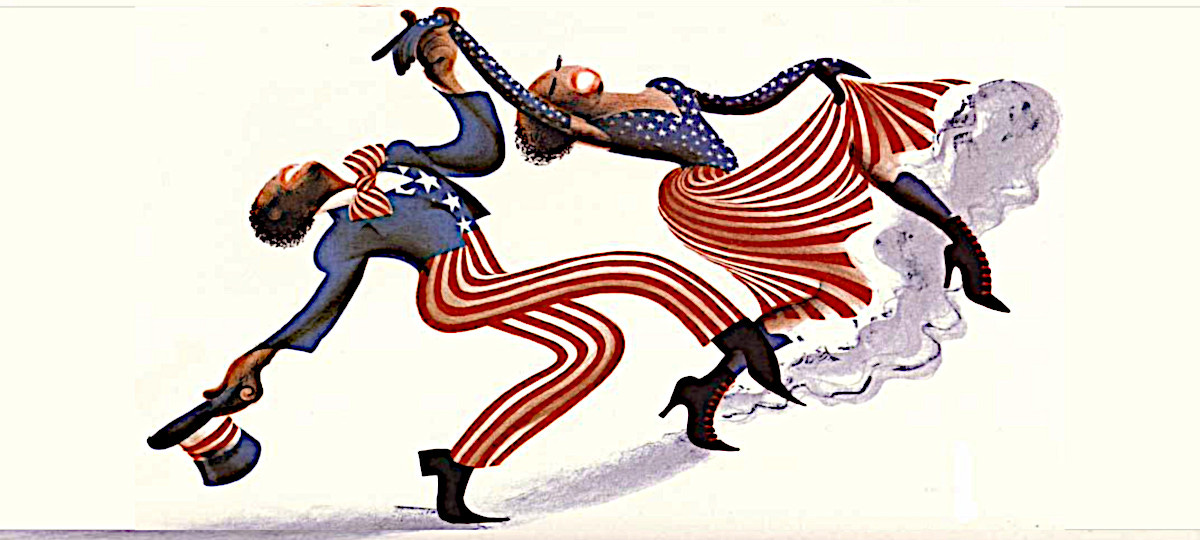ONBEAT, OFFBEAT
FROM A CHAPTER IN MY BOOK “THE BUSINESS – A HISTORY OF THE BUSINESS OF POPULAR MUSIC”. FROM AMAZON OR ANYWHERE ELSE YOU FANCY BUYING IT.
In 1906, the trendy dance in London was “Sausages for Tea”. Two lines of dancers faced each other, men on one side, women opposite, and advanced, keeping their heads down until nearly touching, then throwing them back as they retreated. This was how London’s new generation danced. Children of the upper middle-classes, dressed in dinner jackets and evening dress. The music was the cakewalk, a black dance from America played on the piano. But the words the dancers sang were decidedly British.
“When we are married we’ll have sausages for tea, sausages for tea. When we are married we’ll have sausages for tea. Sausages for you and me”
These young toffs dancing to the cakewalk and singing silly words was the first indication that American black music had the ability to influence popular culture across the world. Except that the cakewalk wasn’t black music at all. It was a spoof.
The cakewalk was a dance developed from dance contests on 19th Century slave plantations where a cake was awarded as the prize. Mocking their white slaveowners, the slaves copied the stiff un-flowing music that their owners liked to dance to, mostly military music, with the emphasis on the 1st and 3rd beat of each bar, like the oompah of a tuba.
They danced to it mimicking the stiff formality of white folk’s movements. Lords and ladies of the royal court, holding hands as they pointed their toes and stepped stiffly round the dance floor, classic European dance music played on the onbeat but with its mannered movements given a new grace and rhythm by black limbs rather than white. And they laughed a lot as they did it.
Soon the trend spread amongst blacks across America and was being included in black vaudeville shows. To the black audience, this spoof on white people dancing was hilarious. Even more hilarious was when white vaudeville shows, not realizing it was a spoof, started including the cakewalk in white vaudeville shows too, thinking it was a traditional part of black culture. From there its popularity spread until British toffs were dancing it and singing “Sausages for Tea”.
But while they thought they were dancing to black dance music from America, this wasn’t black music at all. This was black mockery.
A few years later, in New York, an up-and-coming white songwriter, Irving Berlin, was trying to find ways to incorporate the real rhythms of black music into a pop song and found the answer with “Alexander’s Ragtime Band”.
The song wasn’t a real rag, it was just a clever pop song, a very clever one. A mix of black and white musical styles with military overtones and a syncopated feel similar to the rhythm of black American dialect.
Having finished the song, Berlin didn’t have much confidence in it, and nor did his music publishers, but a junior member of staff liked it and sent copies to bandleaders all over the country, then instructed the company’s seventy-five pluggers to work on it non-stop.
After a few months it began to sell, but only in dribbles, becoming popular in what Berlin described as “a mild pale-pink way”. What finally made it take off was when a well-known vaudeville singer in Chicago (a German immigrant who claimed she’d learnt the negro dialect from a man called Frog Eyes), started shouting the song’s lyrics in the style of a black vaudeville singer.
To become a national hit, songs normally had to start in New York. On this occasion the song spread from Chicago. By mid-summer it was being sung by vaudeville performers across the country and the sheet music had sold 500,000 copies. By the end of the year it was up to a million.
In 1911, “Alexander’s Ragtime Band” shot around the world and started a global dance craze. Amongst other things, it began to popularise the gramophone. Reading the sheet music and banging away on a piano wouldn’t suffice. To dance to it you needed a record, and something to play it on. So all over the world the sales of gramophones increased, even as far away as Russia and China.
The song’s international success was the first indication that African rhythms found in American black music could influence popular culture across the world, and it brought about an immediate change in how people danced.
No longer was it the 1st and 3rd beats of each bar that were emphasised, the “on-beat”. Irving Berlin had used a rhythm heard in the music of southern blacks in New Orleans, the rhythm of Africa, with the emphasis on the “off-beat”. And by copying it he changed popular music forever.
Clapping your hands on 2 and 4 became the new beat of popular song.
CLICK SUBSCRIBE & LEAVE YOUR EMAIL - IT’S FREE - A PIECE A WEEK





👏👏👏